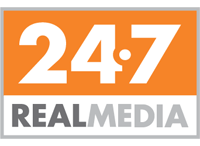Some Thoughts On The Agency And Ad Network Hybrid Model And How It Might Affect The Display Market?
by Ciaran O'Kane on 28th Sep 2010 in News


One of the things I took away from the recent Ad Trading Summit was that the ad network is alive and well. Its present model might be getting battered from increased DSP spend but it’s evolving to meet the challenges of the changing eco-system. The business of media optimisation and delivering value on ad spend is not easy. It takes a combination of hard-to-find resource and expensive technology to make display campaigns work. Agencies will still need ad nets. It’s a simple fact of the process. I suppose it is a form of flattery when agencies want to be more like the ad network.
This is why I found Terry Kawaja’s presentation at OMMA yesterday very interesting – particularly when he described WPP as an ad network. Sure they bought 24/7 Media some time back – but it effectively left it on the top shelf for the last couple of years. Now 24/7 Media is back in play, as WPP looks to implement its automated buying strategy. The plan is simple: build an internal performance network that leverages client, proprietary and 3rd party data – delivering improved campaign performance. It’s common knowledge that WPP is hiring lots of ad net people, mostly in ad operations and publisher acquisition. It’s an interesting move.
Do I see publishers working directly with WPP? Possibly. If it offers guarantees better than ad nets on remnant inventory, I don’t see why not. Fifty-to-sixty pence in the pound should see them beat most ad nets on remnant inventory buys. The problem here for publishers is that if they go direct - and avoid auctioning inventory off to multiple buyers – they might well be leaving money on the table. The other glaring issue is sales cannibalisation. WPP’s new strategy could give its brand clients access to optimised inventory on quality sites. Why pay £20 CPM, when you can buy it for £2 CPM. I can’t imagine publishers would expose themselves to that kind of economic risk. WPP could still do deals with the SSPs, other exchanges and indeed other networks. That’s how they’ll build it out initially.
Is the ad network’s allocation of spend in trouble here? WPP is one of the biggest display buyers on the European market. This project has disintermediation written all over it. WPP is becoming more like an ad network for two simple reasons: firstly, to create more margin on inventory (are agencies allowed to arb the client?); and secondly to cut out the perceived expense of the ad net cost. But holding agencies are never a fluid entity. It’s a political beast at heart. Lots of vested interests make progress slow and methodical. And therein lies the rub for this WPP’s ad net strategy. Some agencies within WPP will want to continue their relationship with networks. And there might not be enough scale to make the display campaigns work better than 3rd party ad nets. Publishers might instead decide to work with SSPs and exchanges where they have more granular control. Let’s not forget that technology is not a traditionally strong area for agencies.
Still, this is an interesting development of the agency model. The lines of demarcation on the buy-side are becoming ever more blurred. Perhaps some of the bubbles on the Improve Digital eco-system map should be merged? Now, can someone tell me what an agency and ad network do again?
Ad NetworkAgencyDisplayExchangeTrading








Follow ExchangeWire